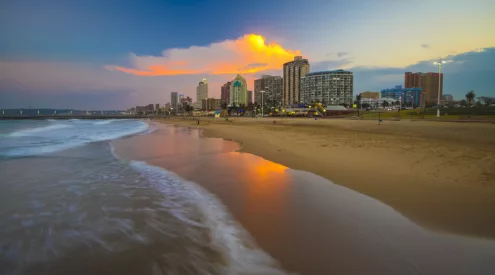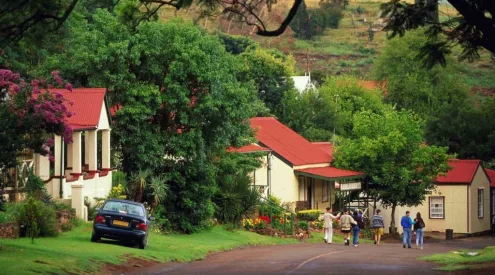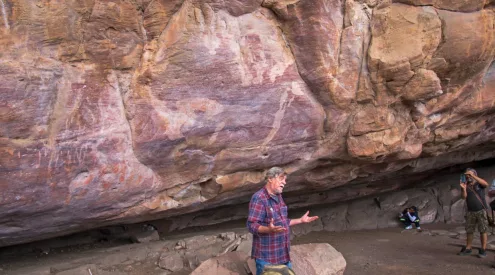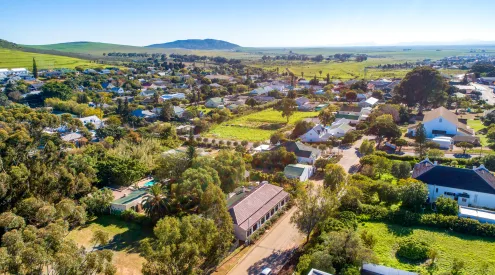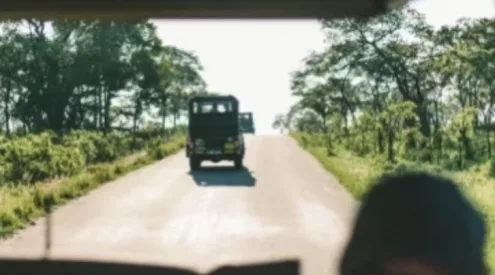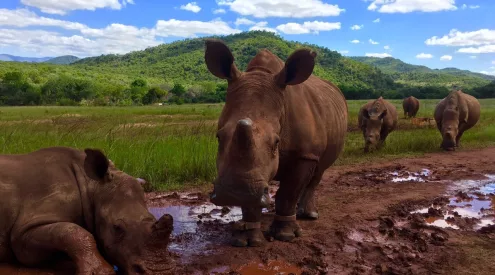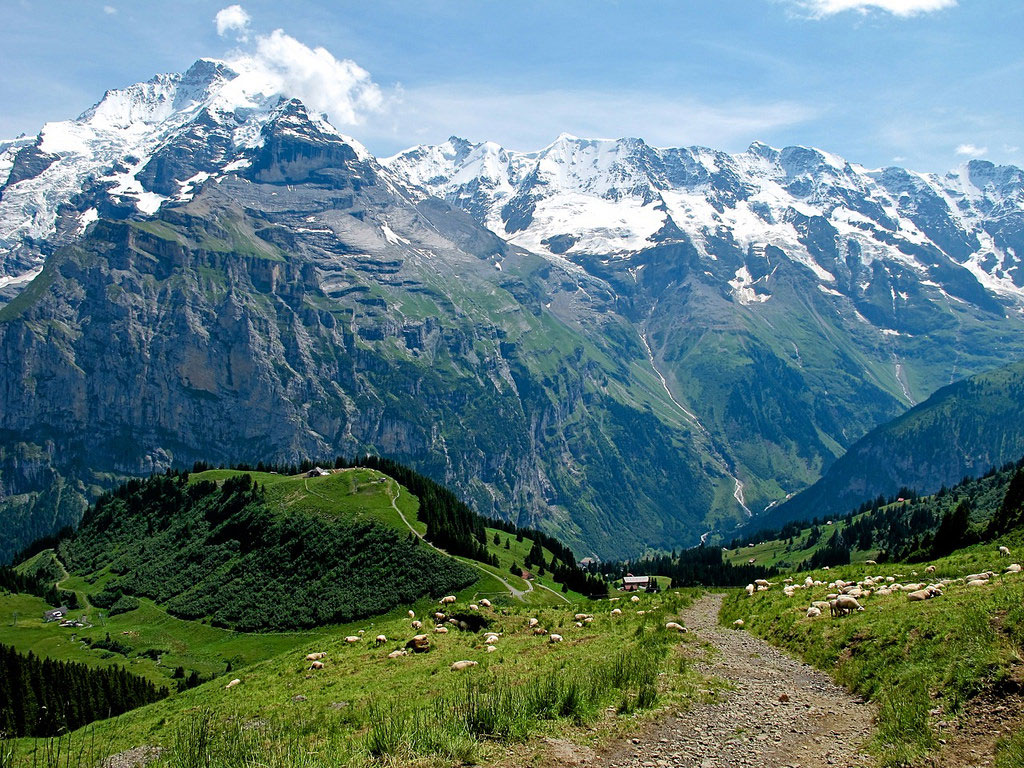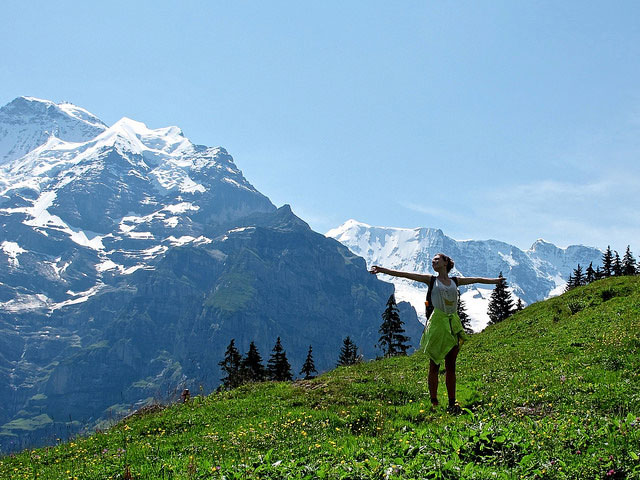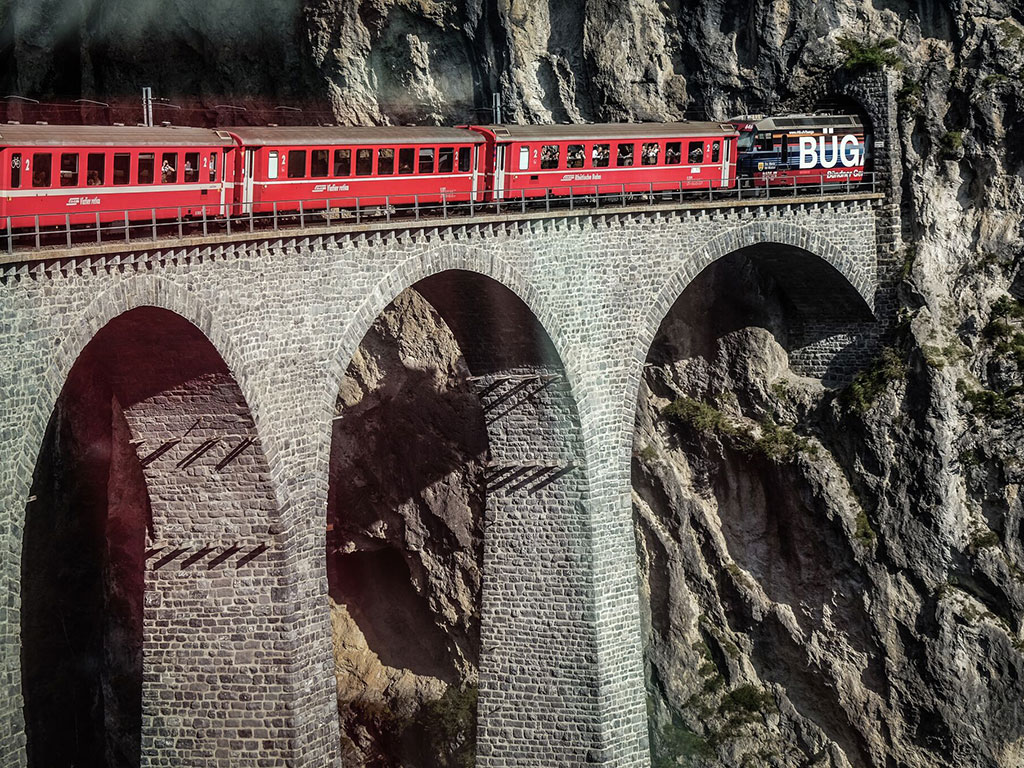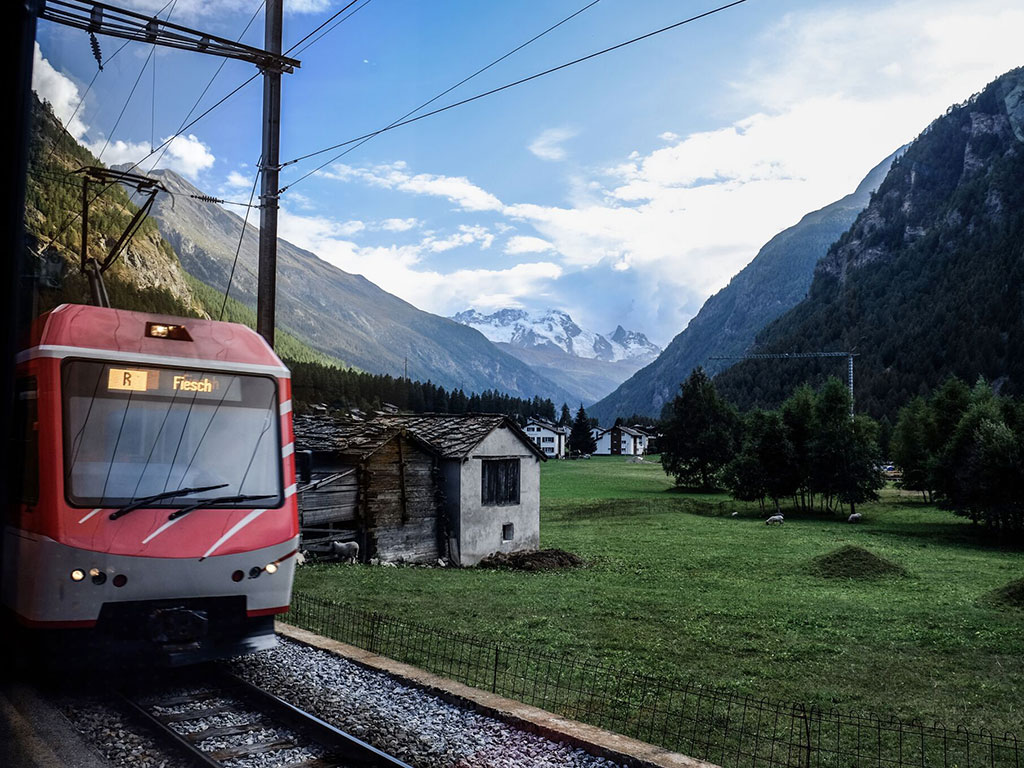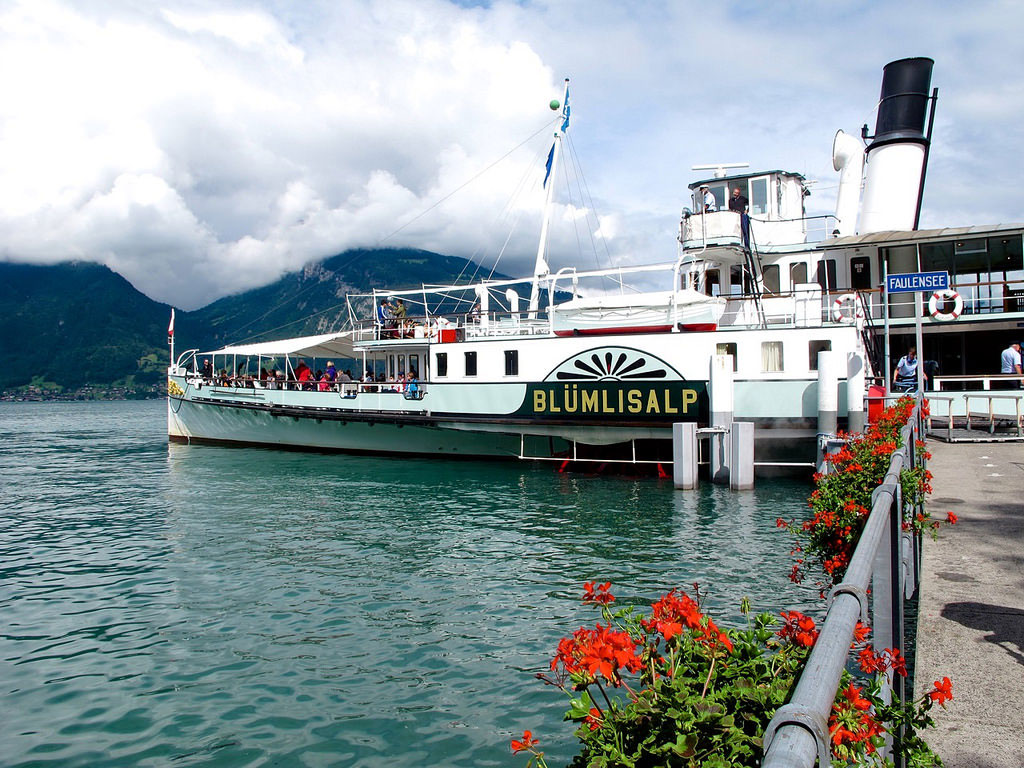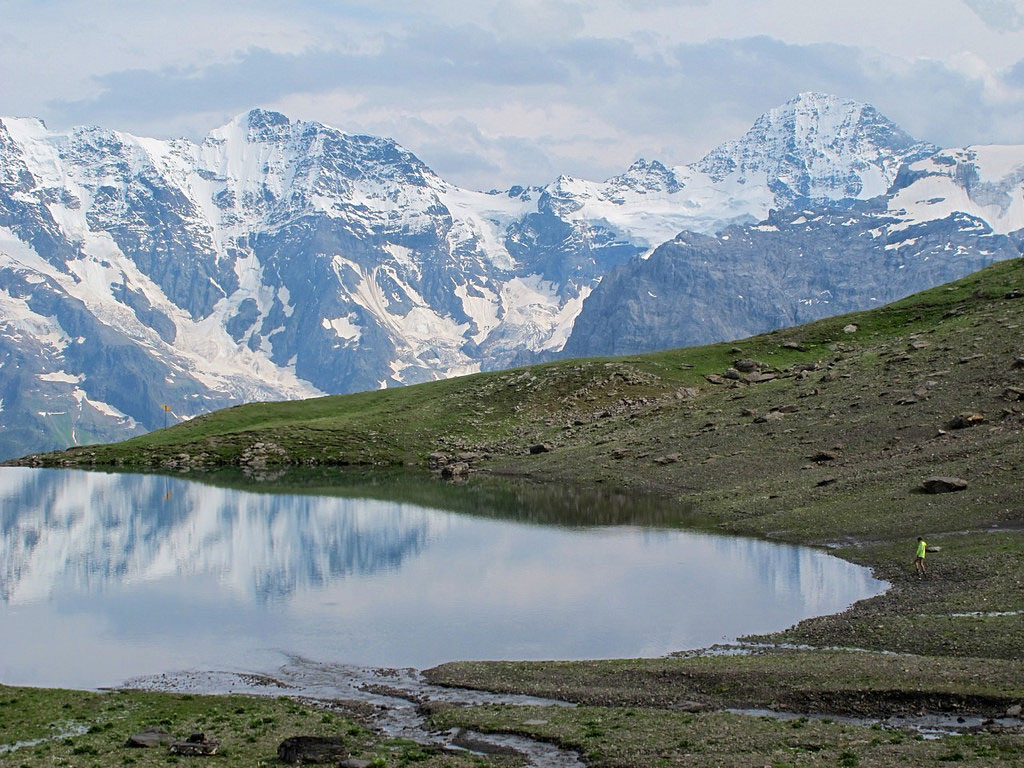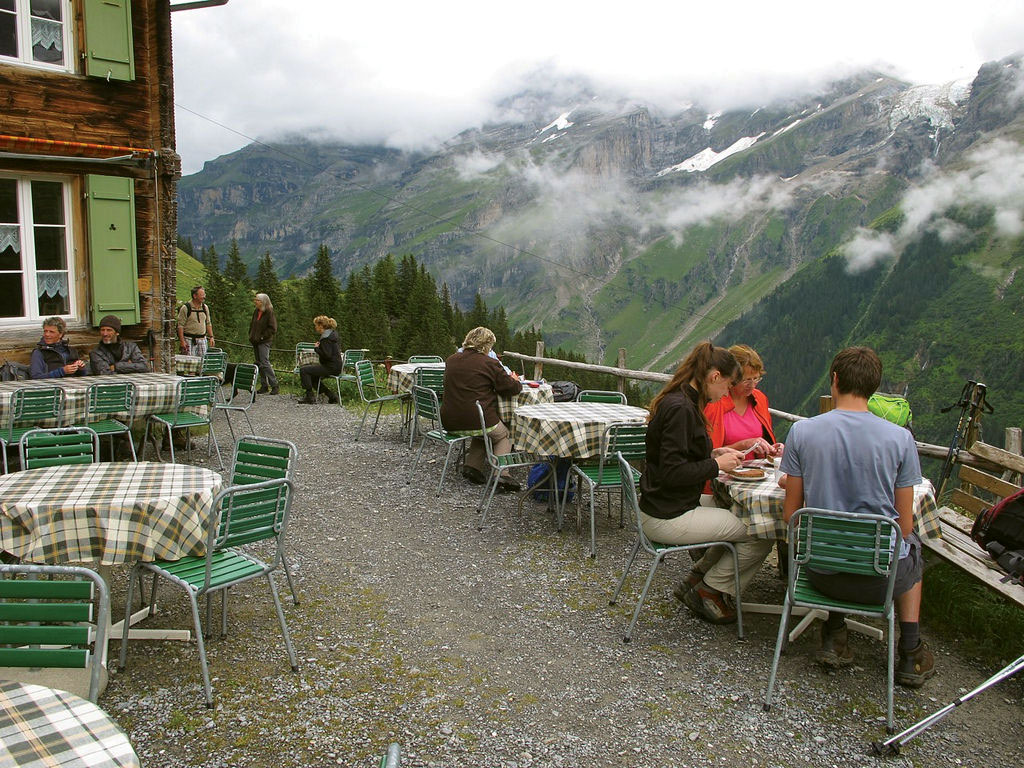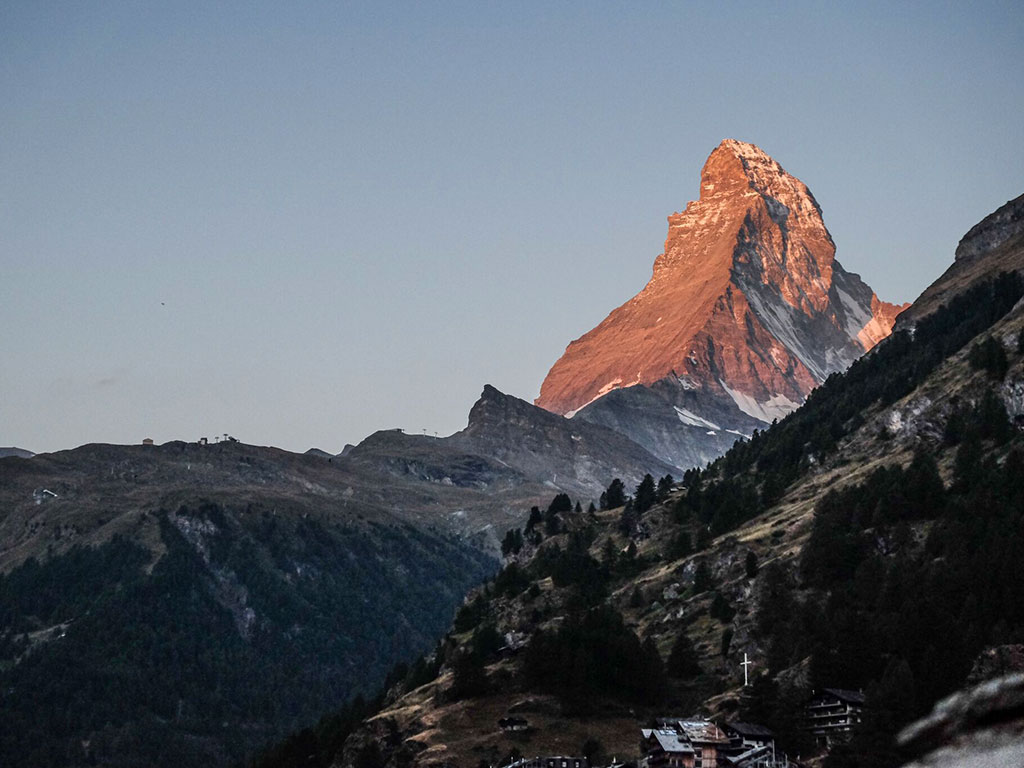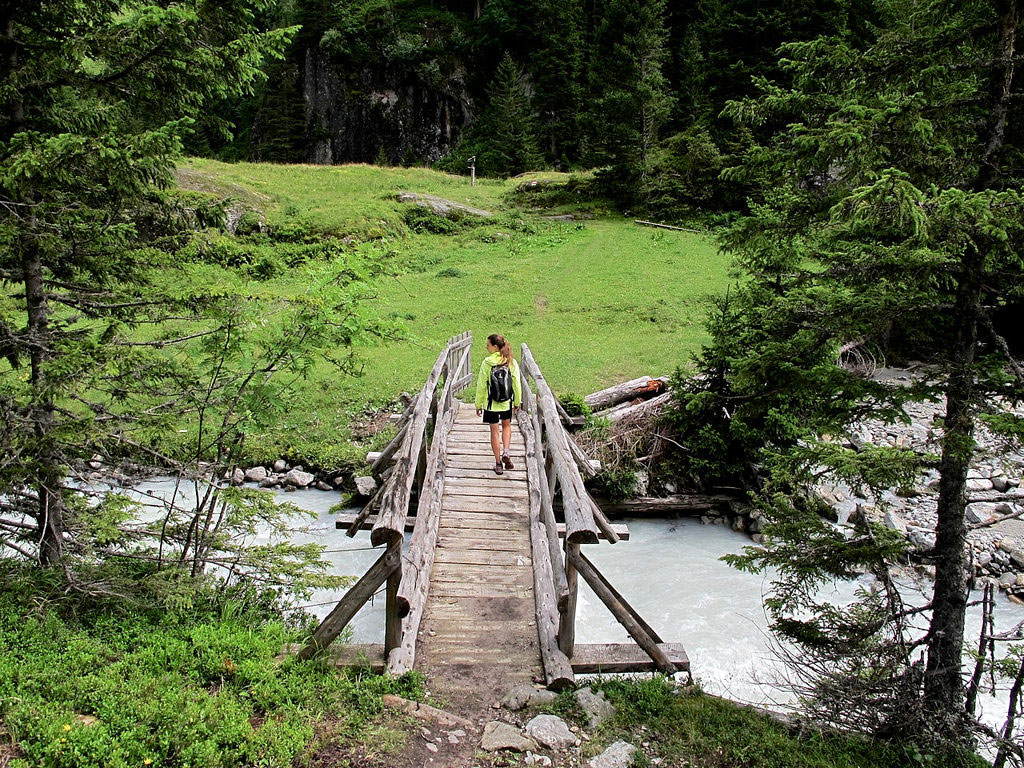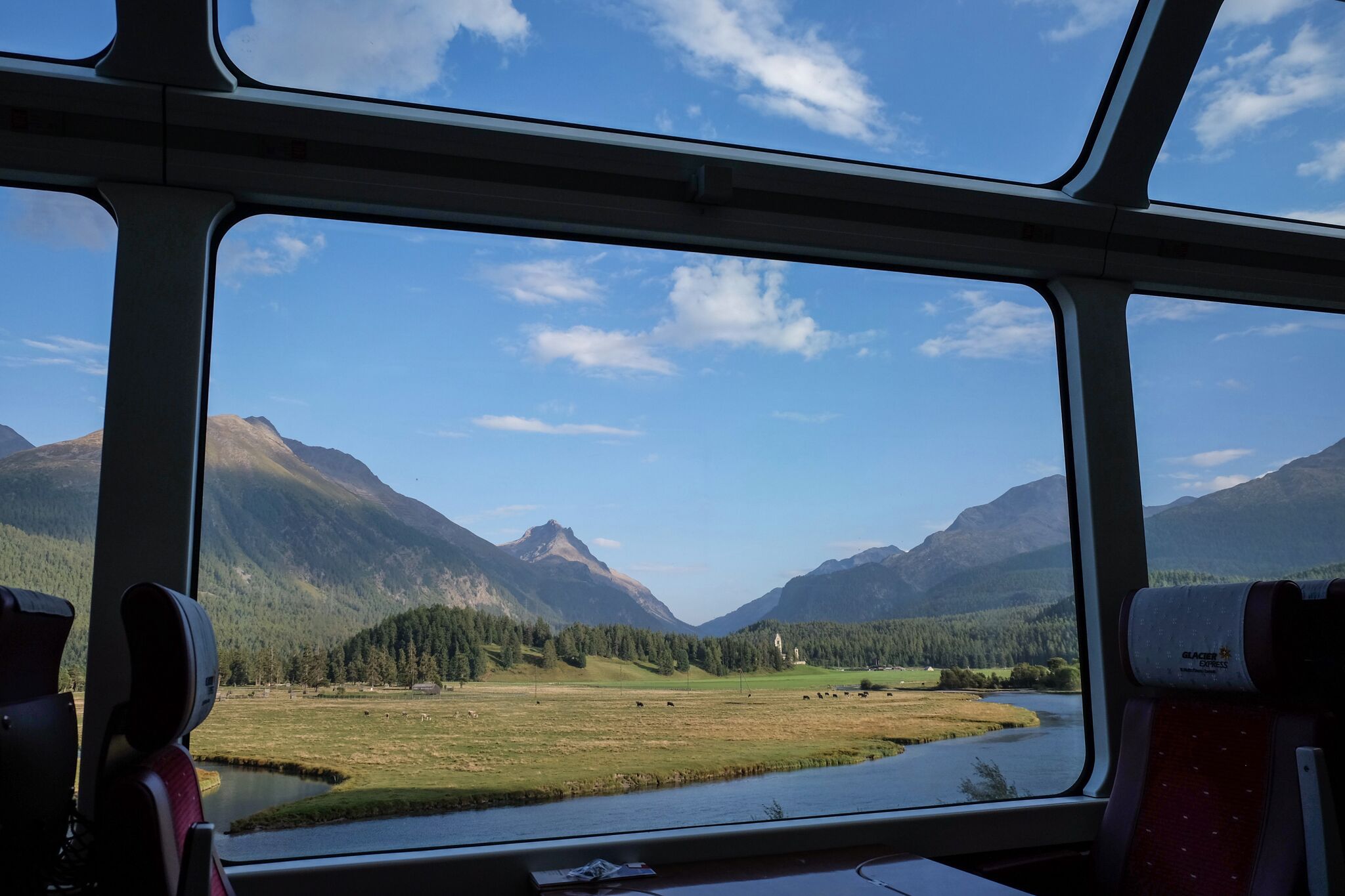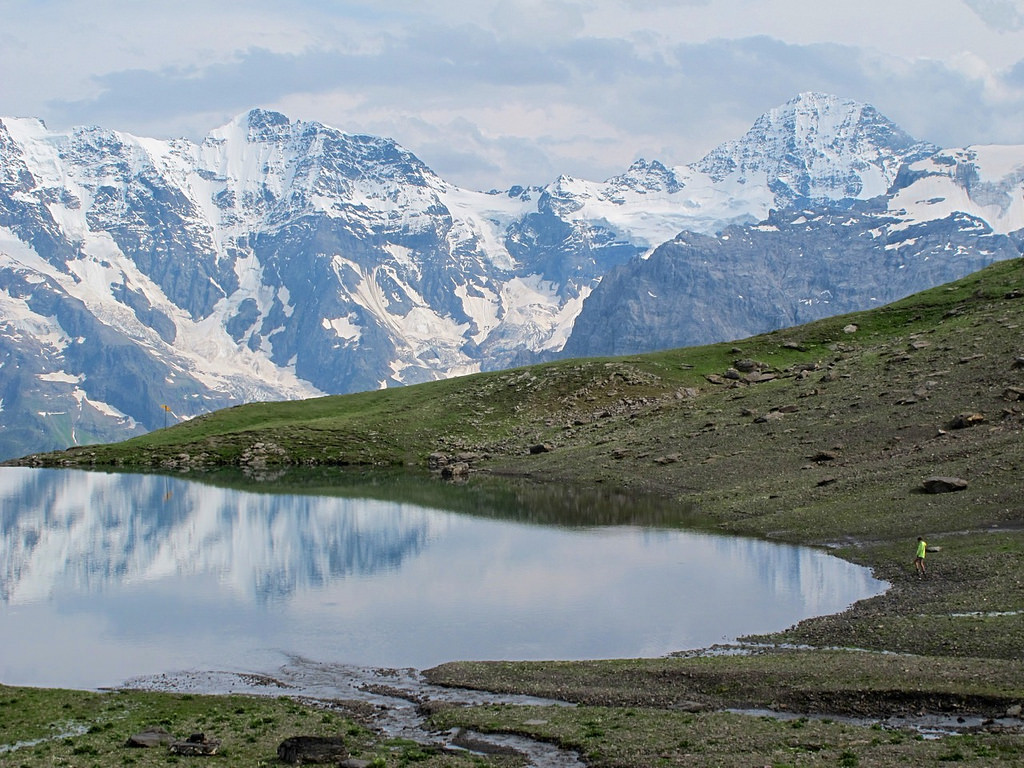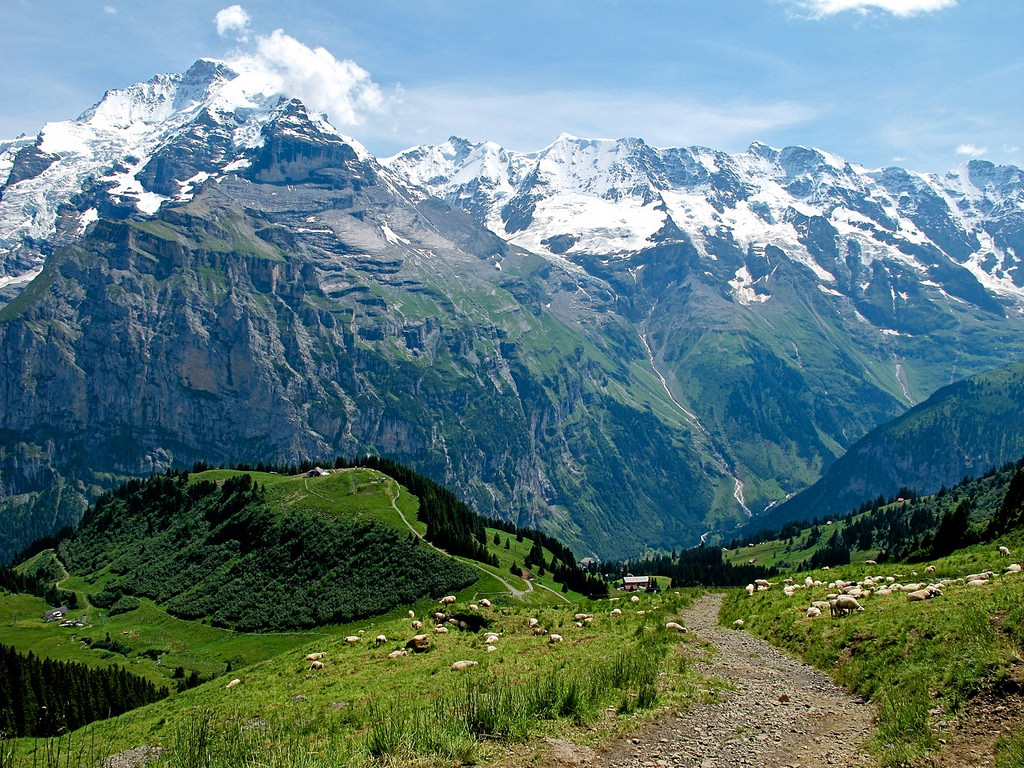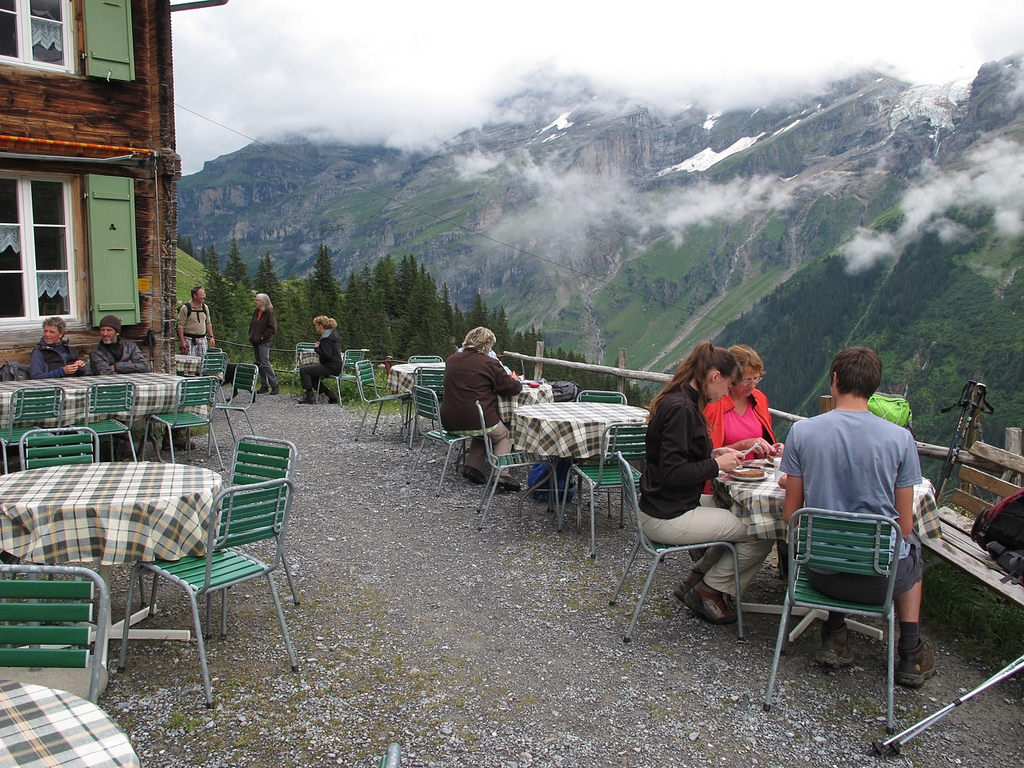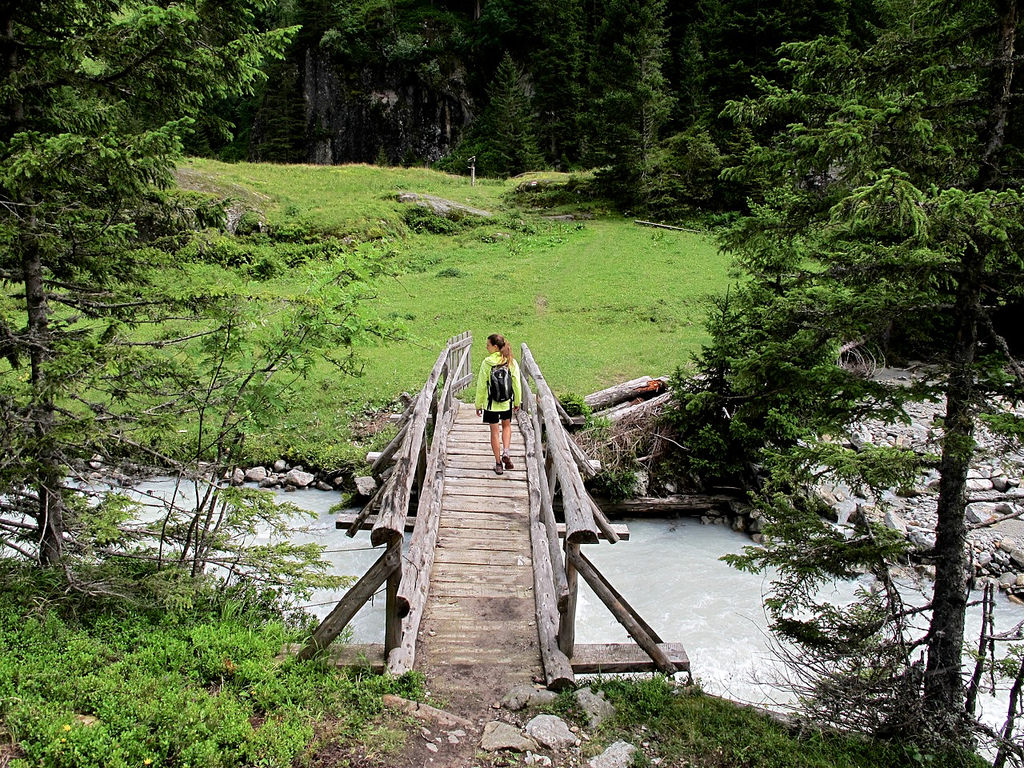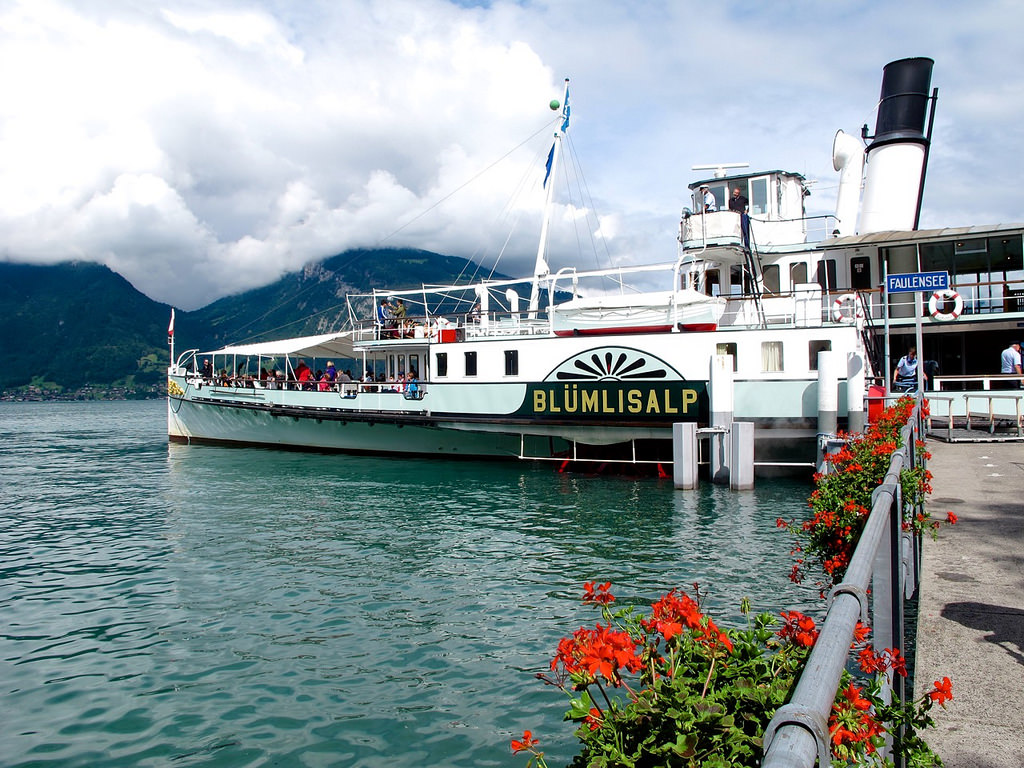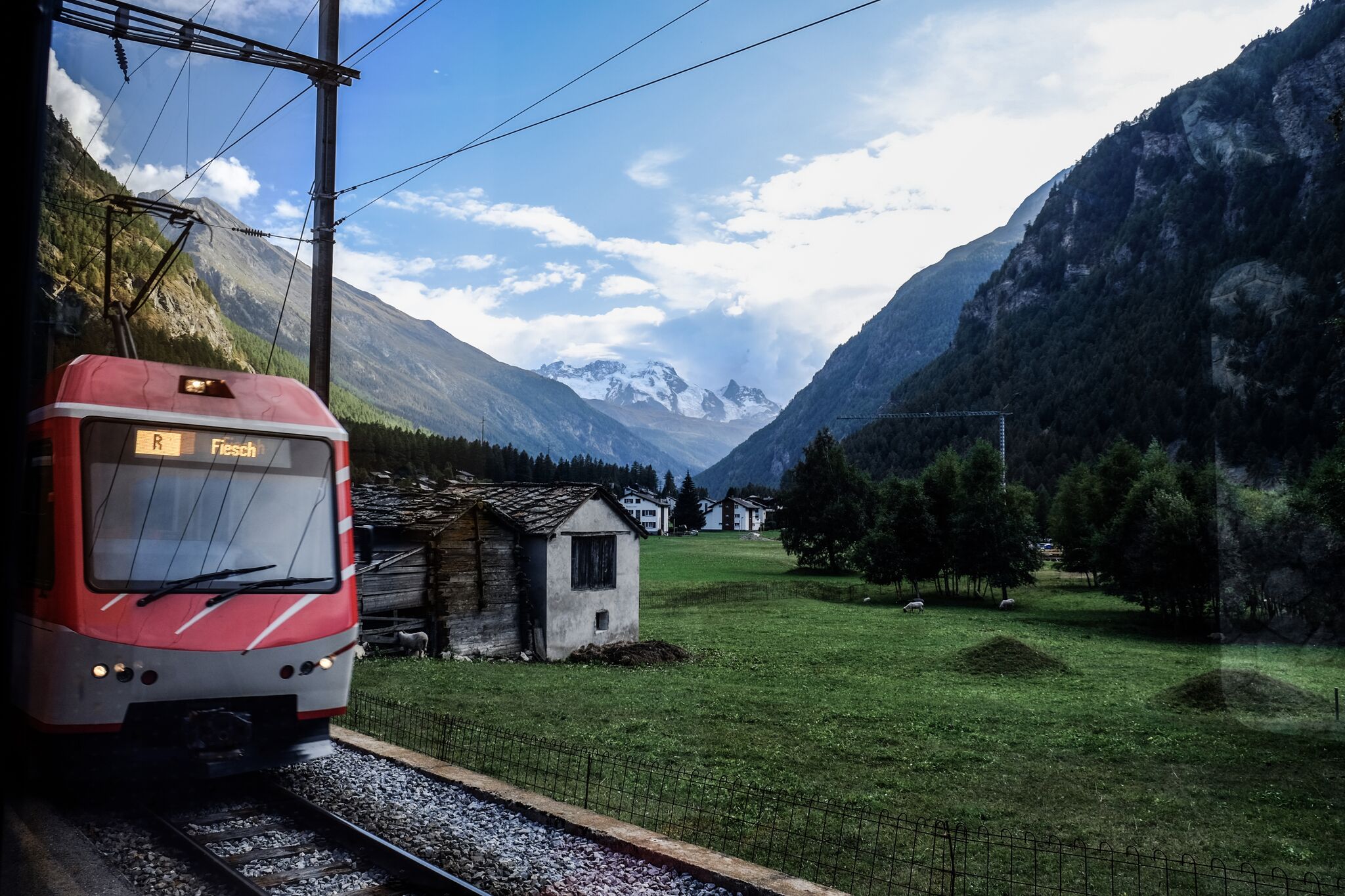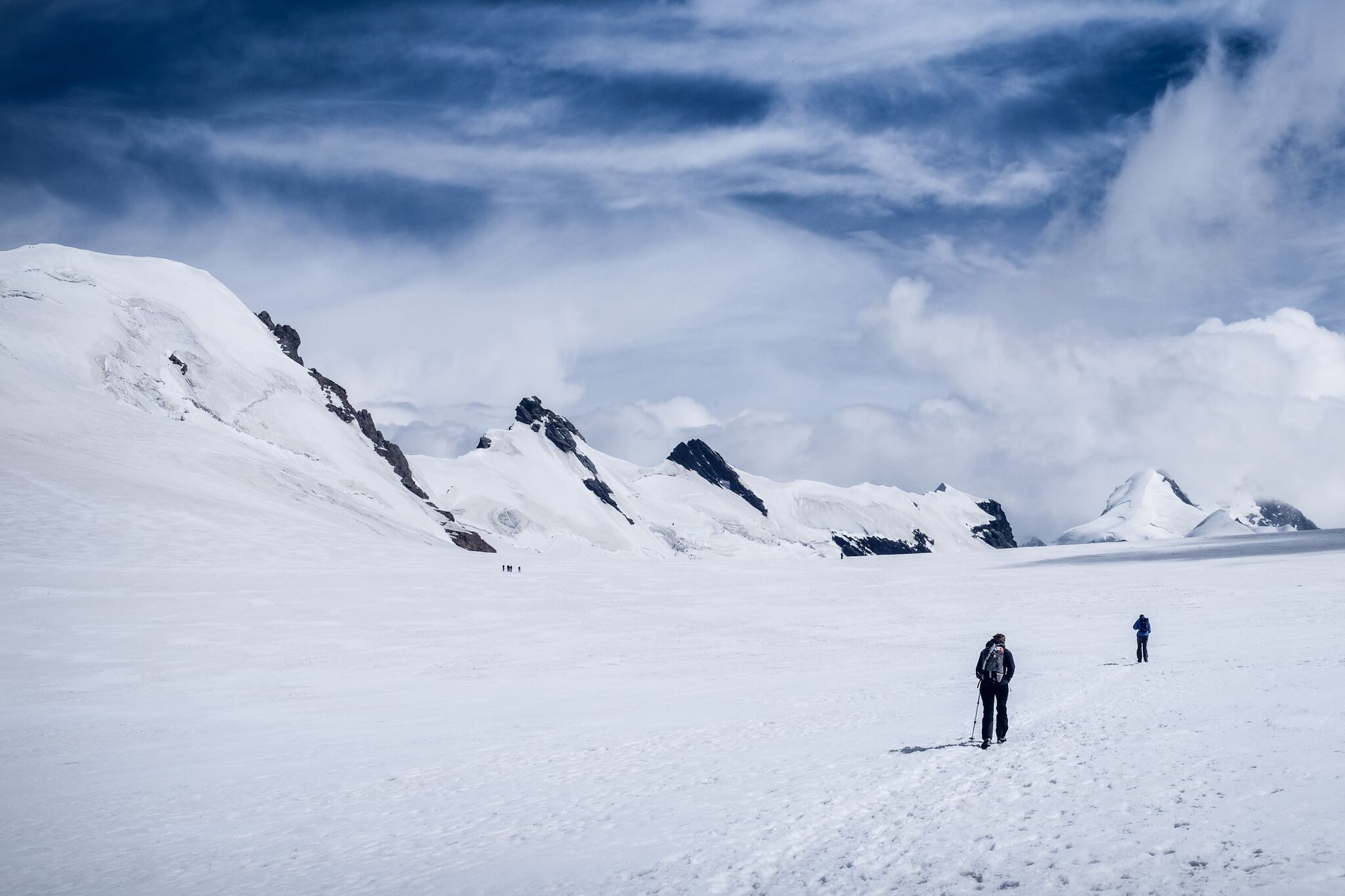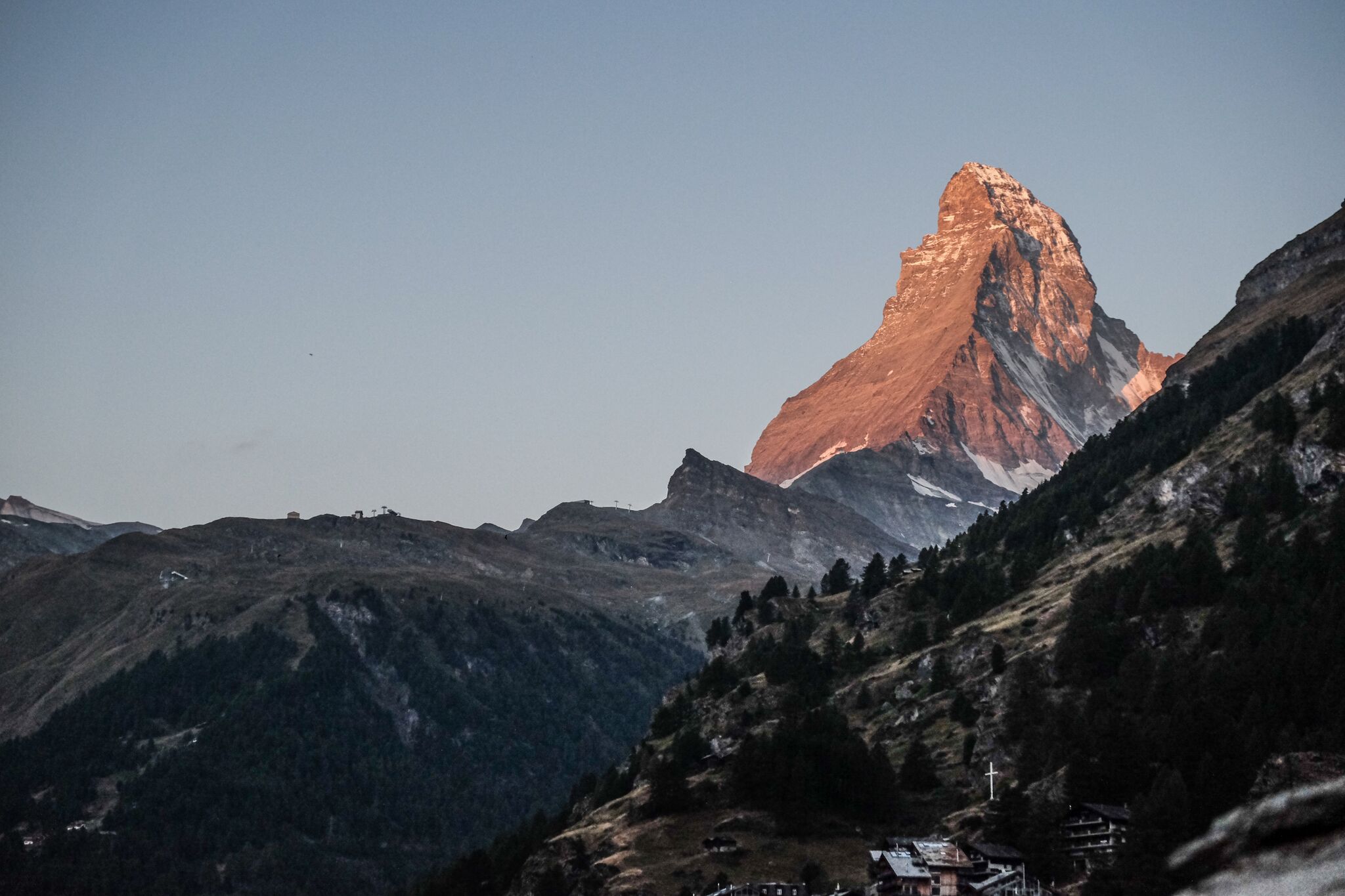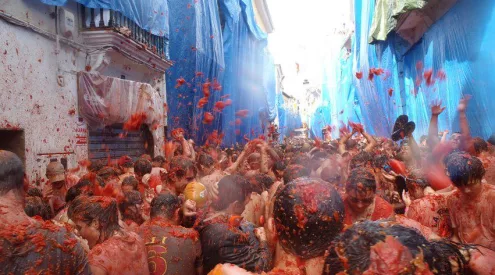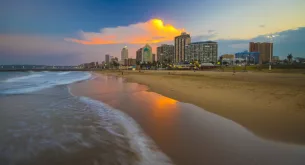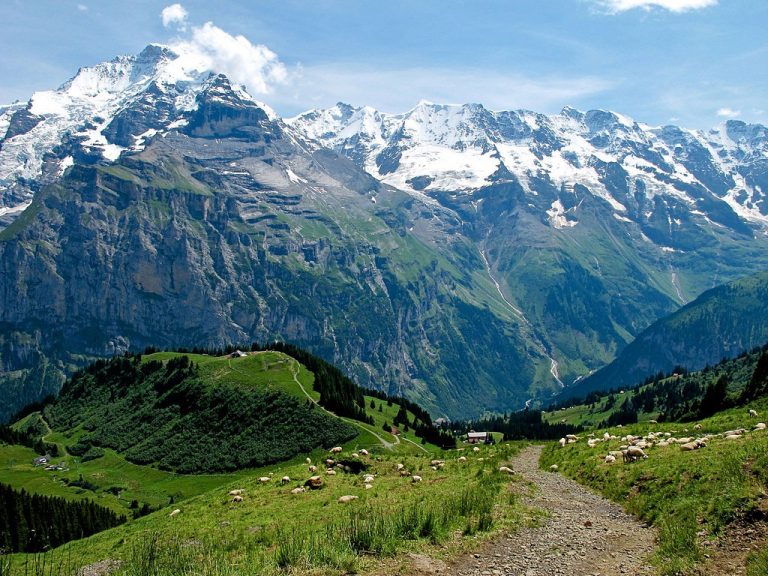
Hiking in the Alps doesn’t cost a cent. Photo by Andrew Thompson.
It was a series of unfortunate events that first lead me to Switzerland. An anticipated reunion in Hungary, after I’d selfishly hopped trains across the continent on my own, for several weeks, had, unsurprisingly, not gone as intended.
Because of this, I found myself morbidly walking the streets of Budapest, alone, in sticky July heat, with nowhere to stay and three weeks – meant for a romantic jaunt around the Czech Republic – at my disposal.
I slumped into a sagging chair in a cheap Prague hostel two days later, still wallowing in self pity, and logged on to the free WiFi. A Facebook message pinged loudly on my phone; a friend I’d met in Florence, and then later followed to Warsaw.
“How do you feel about Switzerland?” she said.
Quick as my fingers could move across the screen, I hammered out a response: “It’s quite a train ride from the Czech Republic,” I replied. “But I’ll meet you there.”
Actually, that’s only how I remember it; the truth is depressingly less impulsive. Thanks to Facebook’s fastidious record keeping, I’ve recently learnt that my response was surprisingly more tepid, “I like the sound of Switzerland. Only concerns are price and accommodation, I guess.”
To be fair, those financial fears were well placed. Switzerland has a fierce reputation as one of the most expensive countries in the world. Numbeo claims the cost of living in Switzerland is second only to Bermuda, and that a simple meal in an “inexpensive Swiss restaurant” (an oxymoron if ever I heard one) is a staggering 24 Swiss Francs, or R300 ZAR.
Still, I went. And have returned. Although there were moments of extravagance (fireside fondues and hot chocolates in mountaintop chalets, mountain-top train rides, and a gondola trip to Glacier Paradise in Zermatt) – there were also those of utter frugality. And given just how beautiful the country is, with some caution, it can all represent relatively good value.
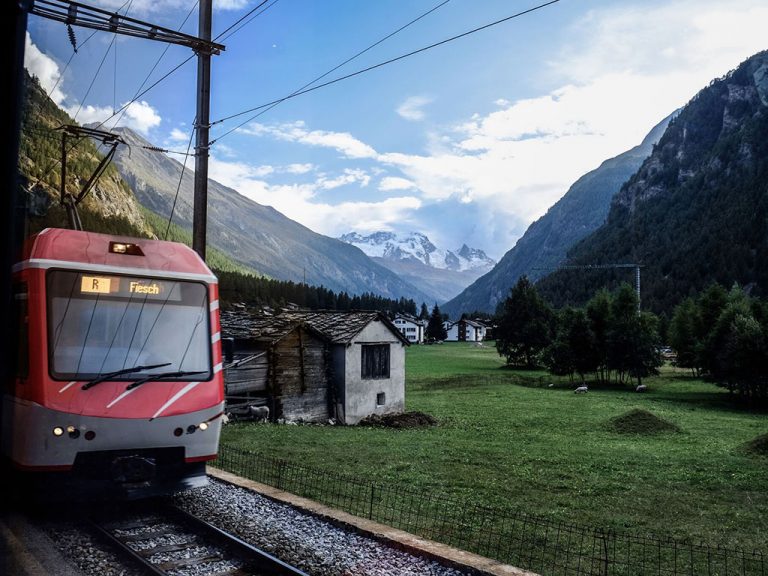
Swiss-train- are an attraction in their own right. Photo by Andrew Thompson.
Forget the hotels, bring a tent
One week and half a dozen train trips later, I stepped off a comically small red train at the end of the line, into a village called Lauterbrunnen. I knew little of village, or the region, except that I’d no longer be alone.
I breathed in a lungful of fresh mountain air, hitched my bag on my back, and craned my neck up at the towering cliffs that formed the valley. The town, which consists of a single, narrow road and a few archetypal Swiss buildings, each puffing smoke out of chimneys into the late afternoon skies, was straight out of a tourism brochure.
Later that day, as we walked the gently sloping road toward the final reaches of the valley, the sound of ripstop nylon flapping above me pulled my attention skywards. Tiny humans in wing suits floated overhead, until they yanked on a cord, seemingly at the very last moment, and came to dramatic sliding stops in the emerald green fields lining the valley floor like patchwork.
Cascading down the cliffs from where they’d jumped were several waterfalls, officially, there are a a total of 72 all along the valley. And in the distance, peering through the clouds, was a snowcapped Jungfrau – one of Switzerland’s most iconic peaks, and where you’ll find the highest railway station in Europe, some 3,454 meters up.
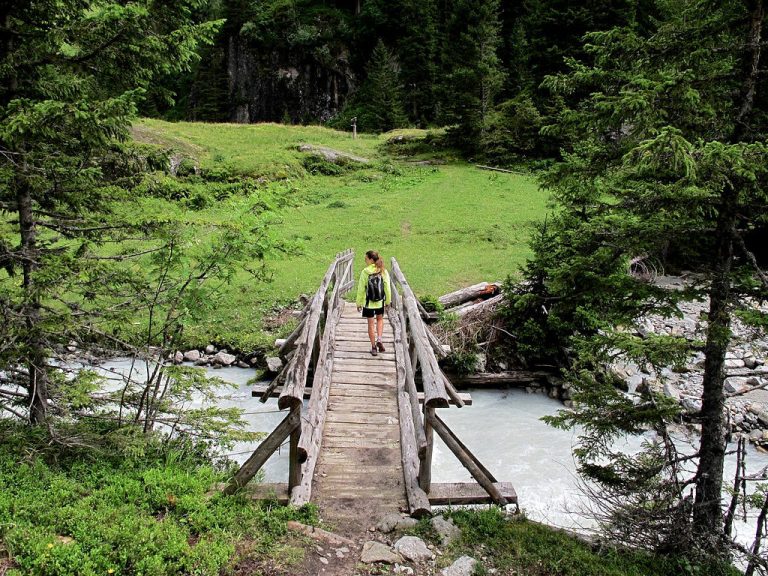
Even walks along the Lauterbrunnen valley floor deliver unexpected surprises. Photo by Andrew Thompson.
It’s easy to imagine that staying overnight anywhere near such beauty and exclusivity will come at a premium price. Certainly, if you’re willing to pay, the luxurious hotels and traditional restaurants disguised in the quaint Swiss chalets will gladly take your money.
If you’re on a tight budget, though, you can skip both. Hostels or, if you’re equipped, camping, are the your best bets. The former are more expensive than elsewhere in Europe (a bed in an eight bed dormitory will cost you 32 Swiss Francs, or about R400), but in tourist-centric regions like Interlaken, Lauterbrunnen, and Lake Geneva, you’ll have a pick of a handful of clean, well-equipped and pleasantly social establishments.
For much of our stay in Lauterbrunnen, however, we opted to camp at Camping Jungfrau. With pleasantly warm weather, lush green fields, and staggering mountain scenery just the other side of your polyester wall, it’s hard to imagine a better way to overnight in Switzerland.
Campsites abound in Switzerland’s natural regions, and they range from barebones and budget (no electricity or indoor areas, and limited cooking facilities), right through to those with electricity, in-house restaurants, convenience stores, fully-equipped kitchens, hot showers, common rooms, and even WiFi.
The most luxurious camp sites with all the amenities included, such as Camping Jungfrau, can cost you under 30 CHF (R380) for a small tent with two people, per night. Compare that to an entry level hotel room in the region, which costs upwards of 160 CHF (R2000), and you might just discover a new love for the outdoors.
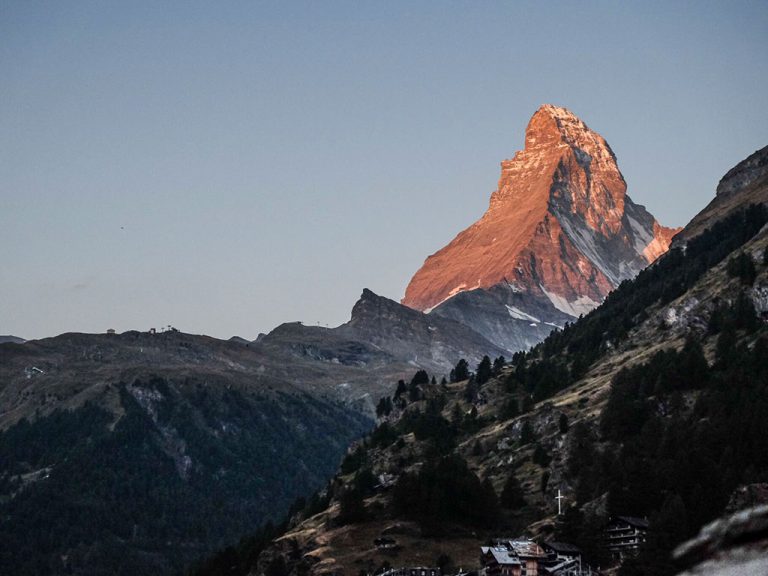
The iconic Matterhorn at sunrise. Photo by Andrew Thompson.
If your preference is for budget, fixed accommodation, but want to avoid busloads of drunk and frisky Contiki travellers running amok in hostels, most campsites also have motorhomes or small cabins for rent. These are more expensive than campsites and hostels, but still offer exceptional value.
Better yet – if you’re willing to put in a good day’s hike, and are pretty self-sufficient, you can stay overnight in an attended hut. Alpine huts dot the mountainsides throughout the country, usually in the most unexpected and spectacular locations, and a good three to five hours walk away from civilisation. Most are pretty sparse and some are quite expensive considering the lack of facilities, but as far as memorable Swiss accommodation options go, it doesn’t get much better than this.
Of course, in bigger cities, the game changes quite drastically. There are few, if any, campsites, and many cities like Lucerne or Zurich offer limited budget accommodation options. In these cases, there’s always AirBnb, though the adage you get what you pay for tends to ring as true here as in any global city.
Cook in, or at least eat local
Your biggest expense after accommodation is most likely going to be eating out. Restaurants in Switzerland are astronomically expensive – a meal for two at a mid-range restaurant will easily set you back a cool 100 CHF (R1250), and that’s if you go easy on the wine.
I learnt this the hard way on a subsequent trip to Switzerland, when, after nine hours aboard the Glacier Express train, I arrived in St. Moritz to find my AirBnb host had cancelled my booking while I was en-route. The only viable option for the night was an ostentatious hotel overlooking the lake, that had little in the way of cooking facilities.
In a town where cobblestone streets lead you past Gucci, Jimmy Choo and Louis Vuitton stores, and even the frozen yoghurt shop feels strangely aspirational, I had to settle for a pizza and beer in a dingy basement that cost more than a night’s stay in many other European cities.
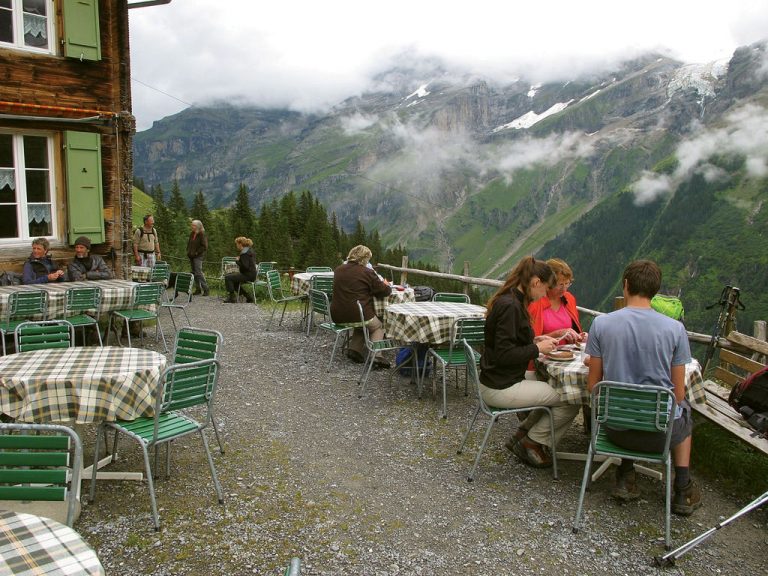
Dining on the mountainside isn’t always cheap, but it’s usually worth every cent. Photo by Andrew Thompson.
It’s a long way of saying, your best bet is to opt for self-catering accommodation – most AirBnbs, hostels and campsites will provide you with the basics to throw together a sandwich before a day of hiking, and a supermarket packet rosti (slivers of perfectly preserved potato) for when you return.
Supermarkets are affordable, and if you’re happy with a diet of rosti, bread, cheese, pasta, and chocolate, chances are you’ll be alright with the prices.
Of course, it’d be a shame to venture all the way to the land of cheese and hot chocolate and not splash out on at least a few occasions. A simple but decadent cheese fondue at a cosy local restaurant in the mountains usually comes at a justifiable cost, as does a quick hot chocolate in a chalet midway through a cool summer’s hike.
The best things in Switzerland are free
If you’re intent on skiing at one of the country’s iconic resorts, then you’re on your own – holidays like those are the domain of rockstars and mining company CEOs; certainly no mid-level travel writer can afford a week of carving down one the world’s most lavish powder runs.
So if you’re cash-strapped and budget conscious, rather opt for the shoulder season when you can spend days exploring the mountains on refreshing hikes.
Don’t think that this is a consolation prize, though. You’re in fact getting the very best of the country at a fraction of the cost. Hiking in the Swiss Alps is as sublime as it sounds, and if you make it high enough, you’ll still get glimpses of snow. In mid-summer Zermatt, I even found people skiing determinedly down admittedly ice slopes.

Hiking in the Alps doesn’t cost a cent. Photo by Andrew Thompson.
The day-long walks on offer throughout the country stretch through meadows, up the mountainsides, between waterfalls. They are occasionally interrupted by cows, goats, fellow intrepid hikers, and the odd mountain chalet serving the ultimate hot chocolate and rostis. The best part is, unless you splurge on these treats along the way, or feel the need to take a gondola or train ride back down to ground level, the day of heavenly hiking doesn’t have to cost you a cent.
You’ll find magnificent walks and hikes throughout the country, but Lauterbrunnen is a particularly good base from which to explore the Alps. By virtue of a travel companion who knew the area well, we were able to cover a lot of ground to take in some of the region’s best views – including an all day hike to the famous 2970 metre-high Schilthorn, and back, made all the more enjoyable by a mid-descent dip in an icy snow-fed lake.
Although hiking was enough to satisfy any Swiss cravings I had, at least on the scenery front, there are obviously activities you can splurge on throughout. Things like paragliding, boat trips, epic high-altitude train rides, and trips to places as enticingly named as Glacier Paradise, are available throughout. And then, of course, there are the train rides.
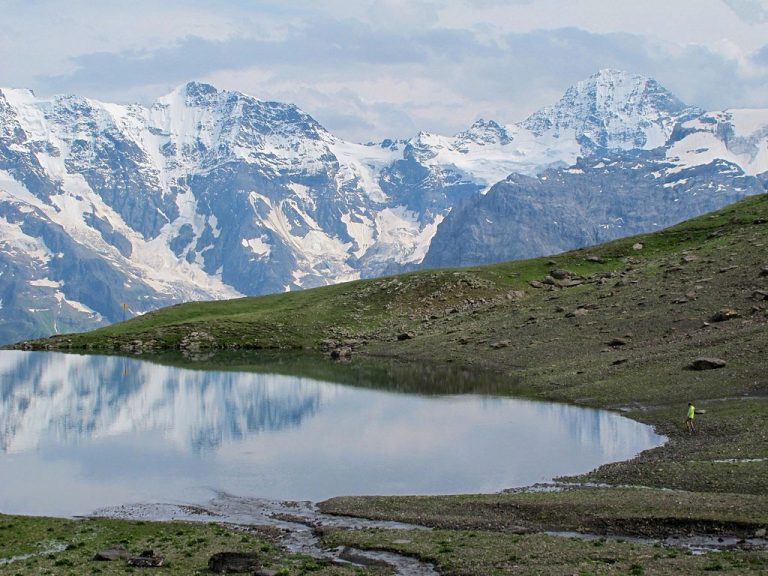
Swimming in snow-fed lakes is a right of passage on a Swiss hike. Photo by Andrew Thompson.
Get a rail pass
You can’t venture to Switzerland and not take at least one famous train ride. They fan out across the country, through, and sometimes over, vast mountains, and alongside pristine glaciers and snow-fed lakes.
They serve up the kind of views that will have you looking towards your fellow passengers for confirmation that what you’re seeing is actually real. And when you step off at the end of the journey, sometimes several hours later, you’ll still question whether or not you were part of some elaborate virtual reality experiment.
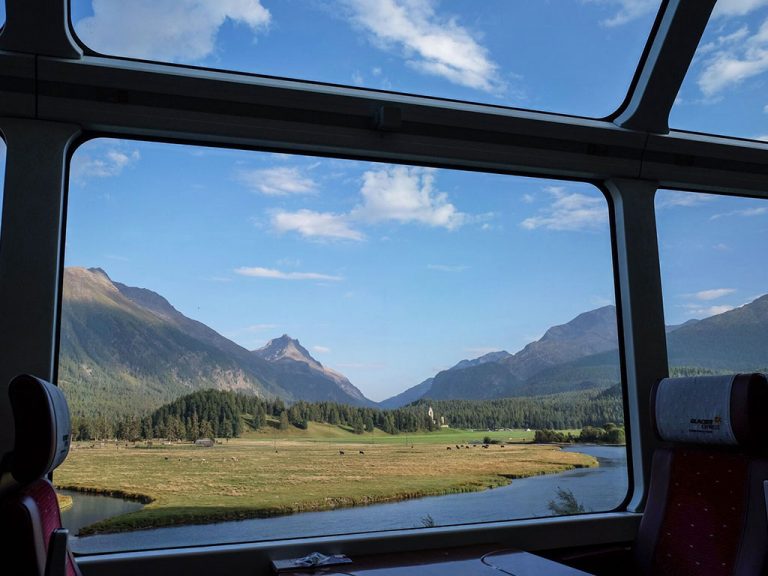
Views from the trains are worth the admission price. Photo by Andrew Thompson.
Because of this, many of the country’s scenic train rides are unattainably expensive. But there are some ways the rest of us can afford to ride. The most accessible scenic train journey is the GoldenPass Line, which runs along a beautiful route between Lucerne and Lake Geneva.
At Zweisimmen, you have the option to transfer into a Classic Carriage, which will have you thinking you’re a character in an Agatha Christie novel. The route is a busy one, often used by commuters, so if you ride in second class, and skip the Panoramic and Classic carriages, you’ll get all of the views on possibly the train ride of your life, for under 30 CHF (R370).
Even the famous Bernina Express, which runs across the Alps into Italy, can be done somewhat affordably – if you’re prepared to skip the well-marketed branded trains, and hop aboard those that run at alternate times along the exact same route.
Of course, there are several others worth taking that cost a small fortune – the branded Bernina Express trains, Jungfraujoch, Glacier Express, and Gotthard Panorama Express are all as incredible as they are expensive.
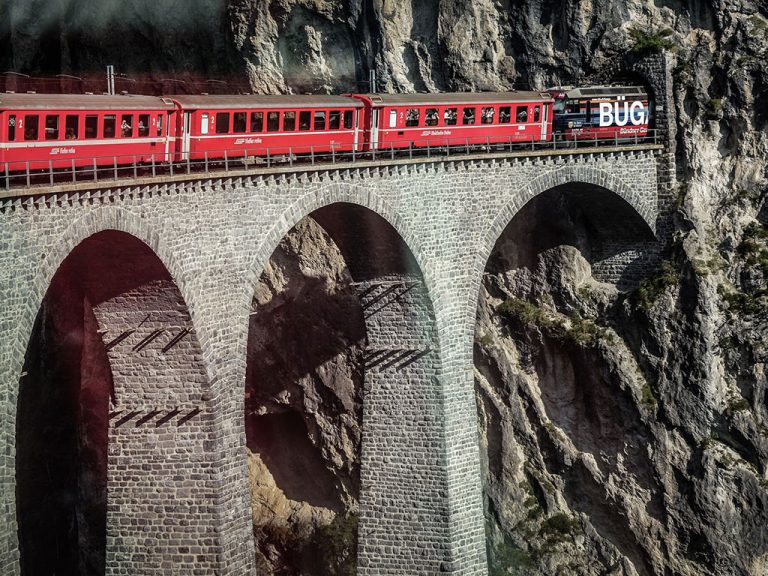
The Glacier Express – one of the world’s most iconic train journeys. Photo by Andrew Thompson.
Trains are simply the most convenient and enjoyable way to get around Switzerland, and if you plan it smartly you can save a fair amount of cash. It’s one country in Europe where a rail pass is a no-brainer if you’re planning to take several trains. If your European trip will include neighbouring countries, then you might want to consider a Eurail Pass. If you’re staying put in Switzerland, then a three, four, eight, or 15 day Swiss Travel Pass should have you covered.
At 225 CHF (R2800) for the entry-level three day, second class Swiss Travel Pass option, it might not seem like a cheap way to get around. But when you consider it as more than a way to get around, but as an actual attraction, it’s easy to justify the cost.
Forget forking up for first class – that’s for show only. Pack some snacks, and your own booze, if you must – the dining carts are fun, but drastically overpriced, and you’re usually allowed to eat and drink your own supplies. Then, plan your routes carefully, using your rail travel days for the wonderous, scenic trips that can cost hundreds of Francs. Some journeys are so exclusive, though that your pass will only entitle you to a discount, so check the fine print carefully.
Couple it with the non-train related freebies that you’ll get as well – things like trips on famous Swiss lakes, entrance into museums – and discounts on gondolas and other attractions, and you may well leave feeling like you’ve scored a good deal.
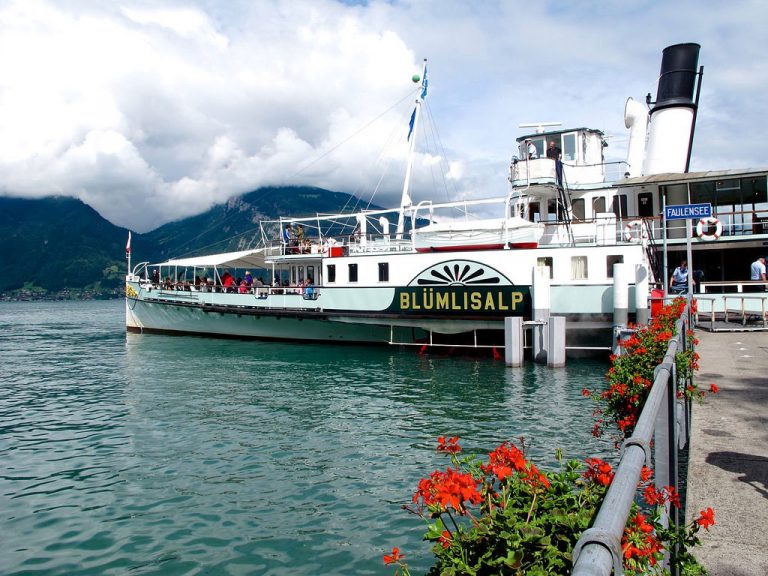
Some rail pass options include freebies, like boat trips on some Swiss lakes. Photo by Andrew Thompson.
If you’re intent on taking a single scenic Swiss train journey, and have other modes of transport organised, then don’t rule out point to point tickets. On popular commuter routes, like the GoldenPass Line, you can purchase standalone tickets online without forking up for a full rail pass. And even if you’re not able to journey across glaciers or over mountain passes on a branded scenic train, don’t expect to use the time to catch up on your missed sleep – because even the most unassuming train journeys in Switzerland will deliver some jaw-dropping surprises.
My three weeks in Switzerland evaporated surprisingly fast, as did the sadness from the series of unfortunate events that lead me there. Three weeks of fresh mountain air, of store-bought potato rostis and powdered hot chocolates, and of unzipping your tent to waterfalls cascading down rugged mountains, has a way putting putting your priorities back in check. And although the country is unlikely to feature as a budget destination anytime soon, with a bit of careful planning, and the odd concession, it’s one full of the richest rewards.

